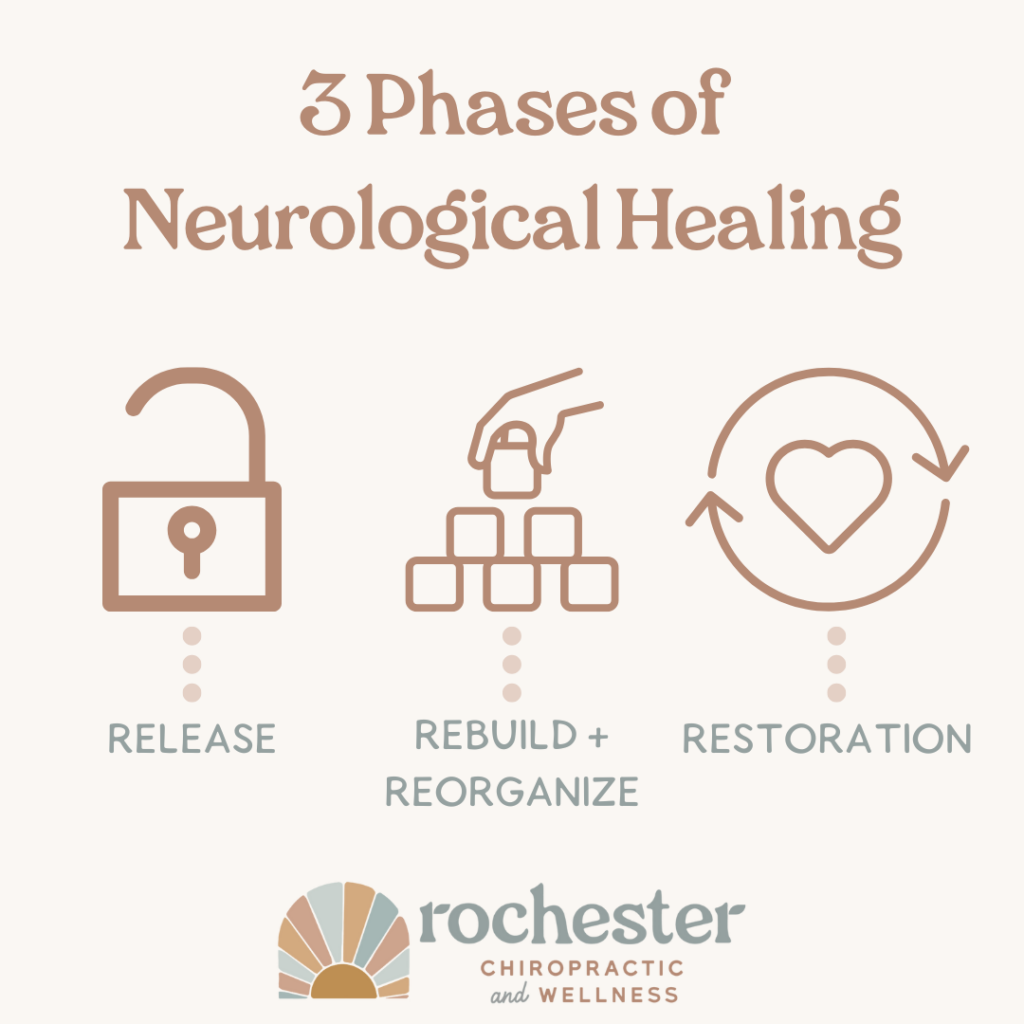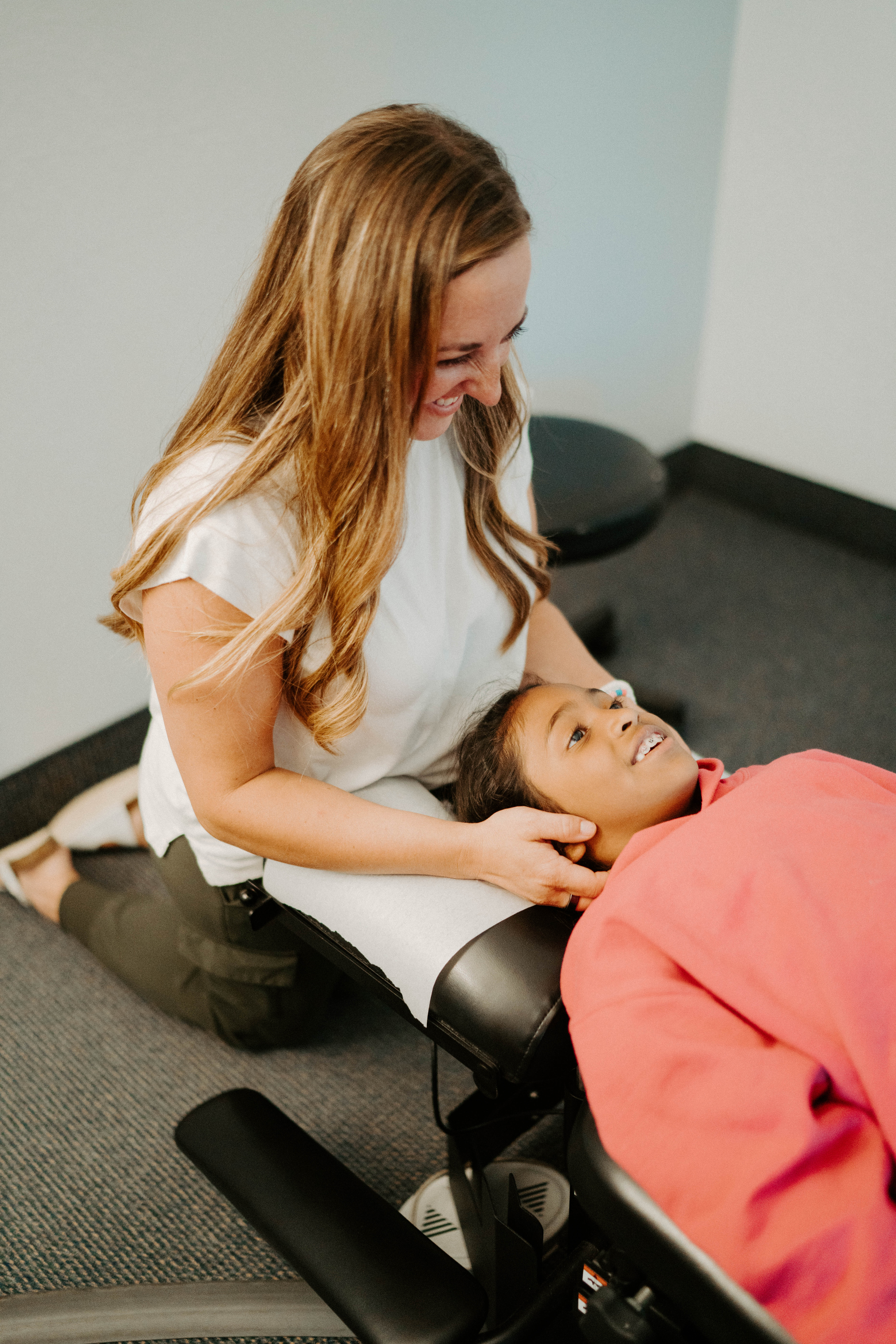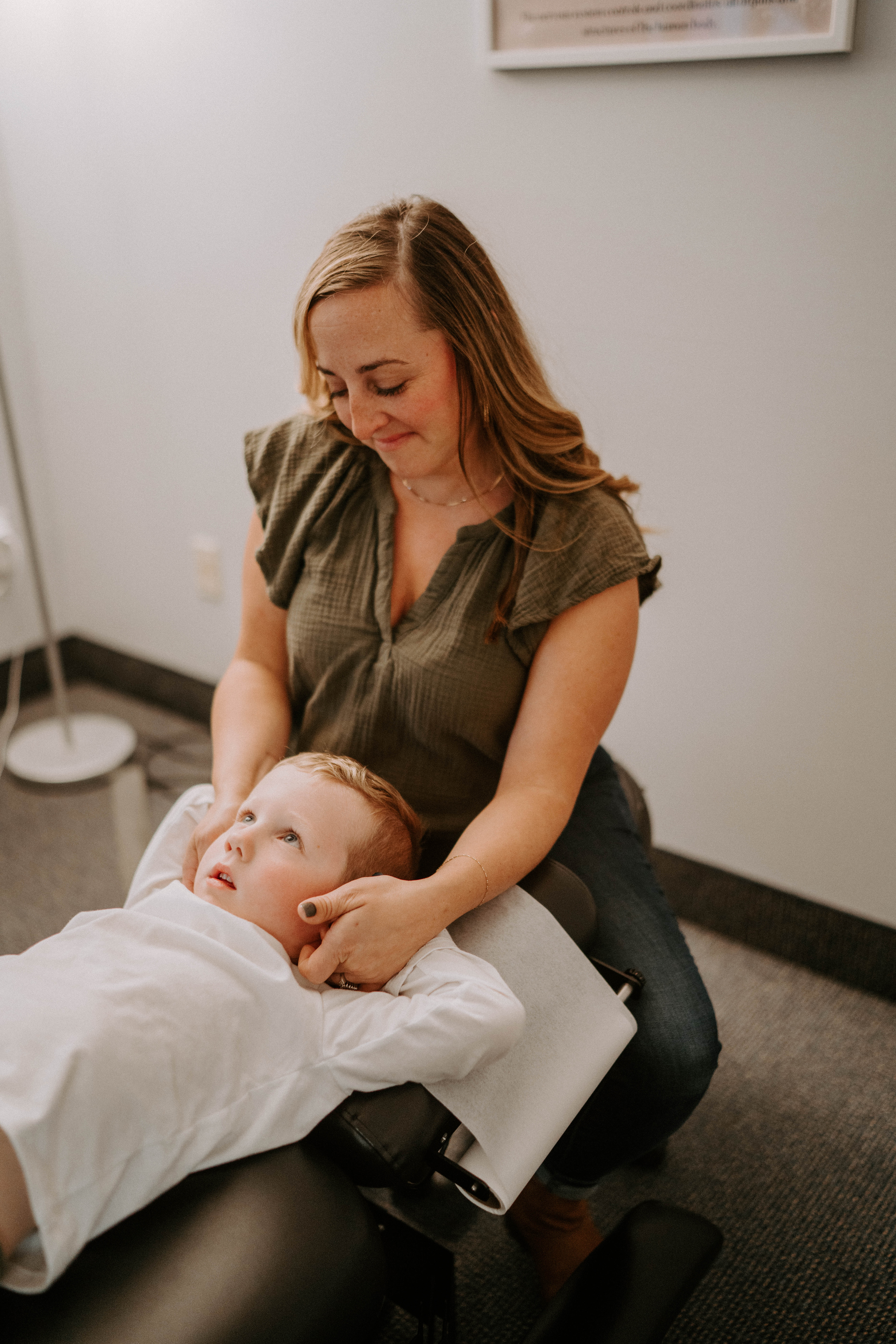WElcome TO
Explore our blog that focuses on holistic care for any and all ages - pediatric well-being, pre/post-natal health, and adult vitality.
THE BLOG

As a parent, watching your child struggle with chronic health issues can feel like being trapped in an endless maze. You’ve tried everything – special diets, medications, supplements, various therapies – yet the breakthrough you’re desperately seeking remains elusive. If this resonates with you, you’re not alone, and more importantly, there’s hope.
When “Trying Everything” Still Isn’t Enough
Let me share a story that might sound familiar. Hannah was just 11 years old when her family found themselves at their wit’s end. Diagnosed with psoriatic arthritis, she battled daily with nausea, headaches, digestive issues, chronic fatigue, anxiety, and depression. Her family had explored countless options: special diets, supplements, medications – even chemotherapy. Nothing provided lasting relief, and Hannah had reached such a low point that she felt empty and didn’t want to live anymore.
This scenario plays out all too often for families dealing with various conditions, from Autism and ADHD to Epilepsy, PANS/PANDAS, allergies, and asthma. Parents exhaust both traditional medical routes and alternative therapies, yet their children continue to struggle.
The Missing Piece of the Puzzle
There’s a crucial piece of the healing puzzle that most healthcare practitioners – both traditional and alternative – often overlook entirely.
It’s not about finding the next treatment or therapy; it’s about understanding the proper sequence of healing.
The Foundation: Your Child’s Nervous System
Think of your child’s body like a house. The nervous system is the foundation, developed first in the womb and controlling every other bodily function:
- Gut health and immune function
- Sensory processing and speech
- Motor development
- Emotional and behavioral regulation
- Focus and cognition
When this foundation is compromised, it’s like building a beautiful house on unstable ground. You can invest in the finest furniture, most advanced security systems, and gorgeous decorations, but if the foundation is cracked, nothing will function as intended.
Understanding the “Perfect Storm”
Three key factors often contribute to nervous system dysfunction:
- Pregnancy Stress Impact: High levels of stress during pregnancy can affect the developing nervous system
- Birth Interventions: C-sections, forceps, vacuum extraction, and other interventions can create physical trauma to the brainstem and vagus nerve
- Early Environmental Factors: Early exposure to antibiotics and environmental toxins can trigger inflammation and compromise the system further
Why Traditional Approaches May Fall Short
When we try to address “brain-based” issues without first stabilizing the nervous system, it’s like trying to repair a roof while the foundation is still shifting. This explains why many children show minimal improvement despite trying numerous interventions – we’re working in the wrong order.
The body follows a specific developmental sequence:
- Nervous system
- Motor system
- Gut and immune health
- Brain function
A New Path Forward: Neurologically-Focused Care
This is where neurologically-focused chiropractic care comes in. Unlike traditional medical treatments that might only address symptoms, this approach:
- Identifies and addresses subluxation, or nervous system dysfunction, that standard medical tests might miss
- Uses specialized neurological scans to pinpoint areas of concern
- Provides gentle adjustments to help restore proper nervous system function
- Creates an environment where other therapies can work more effectively
Hannah’s Breakthrough
Remember Hannah? Everything changed when she discovered neurologically-focused chiropractic care. After her very first adjustment, she experienced immediate relief – sleeping through the night, feeling less nauseous, and regaining her appetite. Today, she’s not just surviving; she’s thriving.
Taking the First Step
If you’re feeling exhausted from trying everything without success, have faith that this might just be the missing foundational piece in your child’s healing journey.
At RCW, the journey starts with understanding your child’s unique needs through specialized neurological assessments. These INSiGHT Scans can reveal if nervous system dysregulation might be holding your child back from complete healing, and if so, we can create a personalized path forward.
Your Next Steps
- Get Assessed: Schedule a consultation and INSiGHT Scans to identify areas of subluxation and understand your child’s specific needs
- Start with the Foundation: Address any nervous system dysfunction with gentle adjustments before adding other interventions
- Build Systematically: Work with your healthcare provider to develop a sequential healing plan
- Stay Hopeful: Remember that healing is possible when we address the root cause
So often, the breakthrough you’re looking for starts with going back to the foundation and building from there. Your child’s healing journey might not be a straight line, but with the right approach and proper sequence, lasting improvement is absolutely possible.


In the world of neurologically-focused chiropractic care, healing is a process that happens in phases. As neurologically-focused pediatric + family Chiropractors, we emphasize the importance of observing Neurological Soft Signs of Healing early in care. These are the subtle yet critical indicators that show a child’s nervous system is beginning to recover, even before the more obvious changes in behavior or health occur.
While parents may understandably look for major breakthroughs—such as improved speech and communication, reduced seizures, or significant behavioral changes—it’s important to recognize that neurological healing starts with foundational shifts in the body.
Neurologically-focused chiropractic care addresses the root cause of nervous system dysfunction, often caused by subluxation, dysautonomia, or a “Perfect Storm” of early stressors. As the nervous system begins to rebalance, there are several early signs that indicate the body is on the right track.
Want to go deeper on this topic? Listen to this episode on The Experience Miracles Podcast, where Dr. Tony covers the subtle yet critical indicators that show a child’s nervous system is beginning to heal, even before major symptoms improve.
What Are Neurological Soft Signs of Healing?
These soft signs are the early and often subtle changes that reflect improved nervous system function. They serve as a key indication that chiropractic adjustments are helping to restore neurological balance and resilience.
Some of the most common Neurological Soft Signs include:
- Improved Sleep Patterns: One of the earliest indicators is better sleep. A child may fall asleep faster, stay asleep longer, and wake up more rested.
- Better Digestion and Bowel Movements: Many children who begin care show improvements in digestion and bowel regulation, which can manifest as more regular bowel movements or a reduction in digestive discomfort.
- Improved Respiratory and Immune Function: Children may experience fewer illnesses, recover more quickly from colds and congestion, and show less susceptibility to respiratory issues and infections.
- Better Posture and Muscle Tone: As subluxations are corrected, parents may notice that their child’s posture improves, with less head tilting, more relaxed shoulders, and better overall body coordination.
- Reduced Sensory Overload: Children with sensory processing challenges often start to experience less hypersensitivity to stimuli, such as noise, lights, or textures. Things like brushing their teeth, wearing different clothes, trying new foods, or getting a haircut become much easier.
- More Calm and Focused Behavior: Another soft sign of healing is when children begin to show more emotional regulation, less anxiety, and an ability to focus better in school or during therapy sessions.
Why Are Soft Signs Important?
These signs indicate that the central and autonomic nervous systems are starting to reset and reorganize, allowing the body to regulate better. By recognizing these small victories, parents can feel confident that their child is progressing, even if more significant behavioral or brain-based changes take time.
We emphasize that soft signs are part of the process of neurological restoration and a foundation for more noticeable transformations down the road. These initial improvements pave the way for more advanced healing, such as better communication, motor skills, and emotional regulation.
How Neurologically-Focused Chiropractic Care Supports Healing
Chiropractic adjustments work to remove the neurological interference caused by subluxation and neurological dysfunction, allowing the brain and body to communicate effectively. When the nervous system is restored and back in balance, the body can begin to heal itself naturally. The soft signs are the body’s way of signaling that it is adapting and regaining function, leading to long-term health improvements.
Foundational Basics Before Brain-Based Advanced Therapies
While most medical and even often holistic providers believe that common neurological conditions like Autism Spectrum Disorder, ADHD, Anxiety, and Epilepsy especially are “brain-based” problems, and therefore all treatments and care options must aggressively and directly target the brain, the truth is most of these conditions have their roots in the body or more “basics” of functions that are thrown off track first.
The motor system, sensory system, digestive system, respiratory system, immune system, and other “bodily basic functions” are essential and foundational to having a healthy brian and overall nervous system function. So true root cause healing of even “brain-based” conditions must actually begin in the “body” and with the “basics” to be more effective, especially in the long term.
This is also why certain treatments or therapies that target brain function first, before the foundational issues of subluxation, nervous system dysregulation, and dysautonomia are addressed often “destabilize” the brain-body connection even further. Many parents report to us that when their children undergo intensive “brain-based” treatments like lasers and primitive reflex integration early on in the healing process, things like sleep, sensory issues, motor tics, and seizures often get worse not better.
This conversation of properly “sequencing” various care options and healing modalities is perhaps the most important conversation we can have with parents today. Where information and access to various options (awesomely) is at an all time high.
It’s very important that parents are informed about how essential starting with the basic foundations of nervous system function and restoration really is. This can often take weeks or even months to see breakthroughs in the Neurological Soft Signs and INSiGHT Scans for tough cases, and it’s important to wait on layering in other targeted therapies like detoxification, speech therapy, OTs, and so forth until these foundational changes are seen first.
Here is a real life example of one of our perfect storm intensive program patients seeing incredible changes with his neurological soft signs:
The Importance of INSiGHT Scans for Tracking Progress
While soft signs are encouraging indicators of progress, objective changes in nervous system function are best confirmed through INSiGHT Scans. These scans provide valuable data on how well the nervous system is functioning by measuring factors like muscle activity, thermal patterns, and heart rate variability.
Positive changes on these scans demonstrate that the nervous system is moving toward optimal balance, resilience, and restoration. Tracking functional improvements objectively helps ensure that progress is happening in the right direction and provides the scientific validation that parents and practitioners need to see.
Here is an example of HRV (Heart Rate Variability) scans improving as care progresses, indicating vastly improved adaptability, resiliency, and overall neurological function:
What to Expect as Healing Continues
As care progresses, parents may observe additional neurological milestones such as:
- Enhanced immune function
- Greater physical coordination
- Improved behavior and emotional stability
- Enhanced focus and cognitive function
The journey to recovery through neurologically-focused chiropractic care is unique to each child, but recognizing these early signs of improvement can give parents confidence and hope. With continued care, the body can reach its full healing potential, leading to long-lasting, transformative changes in a child’s health and well-being.
Trust the Process of Healing
While every parent naturally wants to see big breakthroughs as soon as possible, it’s crucial to understand the importance of these early neurological soft signs. They are a powerful indication that your child’s body is on the right path to healing and recovery. Through continued care, the nervous system will continue to regulate and strengthen, laying the groundwork for greater neurological restoration and optimal health.


If you’ve been lying awake at night, worried about your child’s health and wondering why traditional answers aren’t working, you’re not alone. As a parent, you know when something isn’t right with your child, regardless of what you’ve been told by well-meaning doctors or friends. That instinct – that deepening concern that something more is going on – is worth listening to.
The Silent Epidemic
Here’s a startling truth that isn’t being discussed enough: up to 40% of children today are struggling with at least one chronic health condition. Some research suggests this number may even be higher than 50%. This is simply not ok! We’re seeing unprecedented rates of:
- Anxiety and emotional regulation challenges
- ADHD and focus issues
- Autism spectrum disorders
- Chronic digestive problems
- Allergies and autoimmune conditions
- Sleep disorders
- Sensory processing issues
Looking Beyond Common Theories
Before we dive into what’s really causing our children to be so sick, we need to address two common theories that most people believe. The first probably won’t surprise you, but the second just might shake up everything you thought you knew about children’s health.
Theory #1: “It’s All in the Genes”
The entire traditional medical system is built upon a simple concept: good genes equal good health, and bad genes equal poor health. It’s a neat, tidy explanation that puts everything into convenient boxes.
But here’s the truth that challenges this theory: our genes take thousands of years to adapt and change significantly. There’s simply no way that genetics alone can explain the explosive rise in chronic illness we’re seeing in our kids today. This dramatic increase has happened in just a few generations – far too quick to be explained by genetic changes.
Theory #2: “It’s All About Toxins”
When people first start exploring natural health and wellness (which is fantastic!), they often land on one conclusion: it must be all about toxins and chemicals in our environment. And while we absolutely agree that “kids and chemicals don’t mix,” and our chemical-filled world is definitely a major contributor to chronic illness, it’s not the whole story.
The Hidden Trigger Hiding in Plain Sight
The real culprit behind this explosion in chronic illness is something we all know about but often overlook when it comes to our children: stress.
Yes, stress. It sounds almost too simple, doesn’t it? However, the impact of stress on our children’s developing nervous systems is profound and far-reaching.
Think about it: we’ve normalized stress to such an extent that we barely notice it anymore. Our children’s nervous systems are constantly “wound up and worn out,” yet we rarely connect this to their health challenges. We’ve accepted this state as normal, but there’s nothing normal about it.
Understanding “The Perfect Storm”
What we’re seeing in children’s health today is what we call “The Perfect Storm” – a cascade of stressors that begins early in life and can dramatically impact a child’s developing nervous system:
- It starts during pregnancy with maternal stress affecting fetal nervous system development.
- Birth interventions (C-sections, forceps, vacuum extractions) can cause physical trauma to the brainstem and vagus nerve.
- Early childhood challenges compound these initial stressors (environmental toxins, repeated antibiotic use, social challenges, etc). Early issues like colic, reflux, and ear infections are warning signs.
When these stressors combine, they create a perfect storm of nervous system dysfunction and dysregulation – also called subluxation and dysautonomia. This doesn’t just affect mental and emotional well-being – it impacts every aspect of health:
- Gut health and digestion
- Immune system function
- Sleep patterns
- Hormone regulation
- Brain development
- Emotional regulation
- Physical development
Children don’t just “grow out of” these challenges – they often develop into more complex issues.
Taking Back Control
The good news is that understanding this connection between stress, nervous system function, and overall health opens up new possibilities for healing. Instead of just treating symptoms or trying to “fix” genes, we can focus on supporting our children’s nervous systems and creating environments that promote natural healing.
Neurologically-focused chiropractic care at RCW identifies and addresses subluxation and nervous system dysfunction. We start by gathering a case history of your child and then use advanced INSiGHT scanning technology to measure neurological function in your child. Using this data, we then create personalized care plans based on each child’s specific needs. Finally, with our gentle adjustments, we help restore proper nervous system regulation naturally, without drugs.
Your Next Steps
It’s time to stop accepting chronic illness as the new normal for our children. Understanding the true role of stress and nervous system function in your child’s health is the first step toward real, lasting change.
At RCW, we regularly see families who have tried everything. From conventional medicine to specialized diets, detox programs, and expensive functional medicine treatments – yet their children continue to be sick and struggle. When traditional approaches and countless medical interventions haven’t worked, we focus on a simpler explanation. While factors like genetics, gluten sensitivity, and gut health can contribute to illness, the root cause traces back to nervous system dysfunction, dysregulation, and subluxation.
If this is you, please don’t hesitate to reach out today to schedule a consultation. We not only provide world-class chiropractic care at our office, but we also provide the most empowering and supportive community out there!
Your child’s future health is worth every step of this journey, and it’s never too late to start making positive changes that can impact not just their immediate well-being but their health for years to come.








